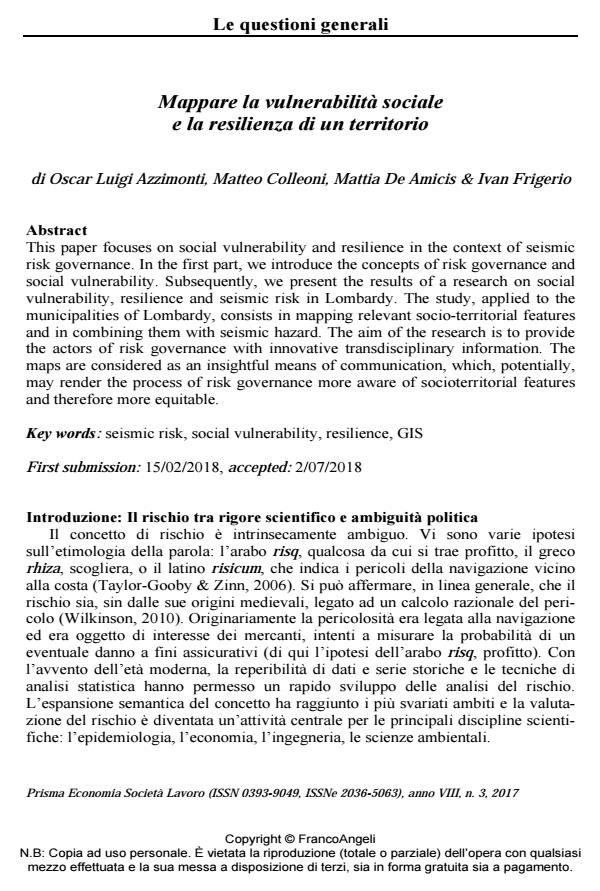Mappare la vulnerabilità sociale e la resilienza di un territorio
Titolo Rivista PRISMA Economia - Società - Lavoro
Autori/Curatori Oscar Luigi Azzimonti, Matteo Colleoni, Mattia De Amicis, Ivan Frigerio
Anno di pubblicazione 2018 Fascicolo 2017/3
Lingua Italiano Numero pagine 11 P. 14-24 Dimensione file 333 KB
DOI 10.3280/PRI2017-003002
Il DOI è il codice a barre della proprietà intellettuale: per saperne di più
clicca qui
Qui sotto puoi vedere in anteprima la prima pagina di questo articolo.
Se questo articolo ti interessa, lo puoi acquistare (e scaricare in formato pdf) seguendo le facili indicazioni per acquistare il download credit. Acquista Download Credits per scaricare questo Articolo in formato PDF

FrancoAngeli è membro della Publishers International Linking Association, Inc (PILA)associazione indipendente e non profit per facilitare (attraverso i servizi tecnologici implementati da CrossRef.org) l’accesso degli studiosi ai contenuti digitali nelle pubblicazioni professionali e scientifiche
This paper focuses on social vulnerability and resilience in the context of seismic risk governance. In the first part, we introduce the concepts of risk governance and social vulnerability. Subsequently, we present the results of a research on social vulnerability, resilience and seismic risk in Lombardy. The study, applied to the municipalities of Lombardy, consists in mapping relevant socio-territorial features and in combining them with seismic hazard. The aim of the research is to provide the actors of risk governance with innovative transdisciplinary information. The maps are considered as an insightful means of communication, which, potentially, may render the process of risk governance more aware of socioterritorial features and therefore more equitable.
Parole chiave:Seismic risk, social vulnerability, resilience, GIS
Oscar Luigi Azzimonti, Matteo Colleoni, Mattia De Amicis, Ivan Frigerio, Mappare la vulnerabilità sociale e la resilienza di un territorio in "PRISMA Economia - Società - Lavoro" 3/2017, pp 14-24, DOI: 10.3280/PRI2017-003002